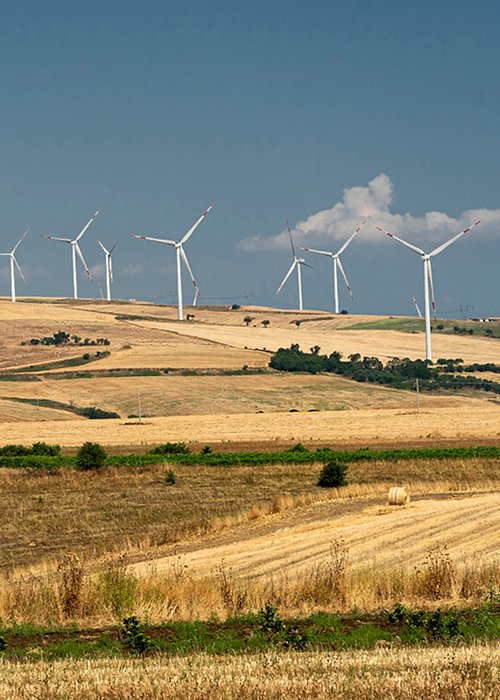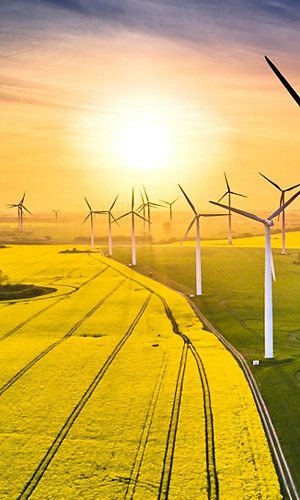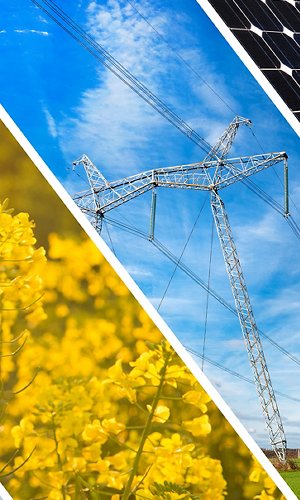Humans have been using wind power since ancient times. Indeed, wind power has been used for thousands of years in navigation to propel sailing vessels and, through windmills, to produce mechanical power for use especially in agriculture. The first mills date back as far as 200 BC. Over the years, the field of application of windmills has increased more and more and the technological level itself has greatly improved. The first wind turbine built in Europe by Frenchman Duc De La Peltrie dates from 1887, while in Ohio, in the United States, the first windmill for the purpose of producing electricity, designed by Charles Brush, was created in 1890. Today, the number of blades has decreased (compared to early windmills) and the rotation speed has increased, achieving greater energy efficiency. In fact, especially in recent years, in fact, even small installations manage to have very high performance and technology levels. Many systems have emerged to optimise power generation by making the most of the wind’s kinetic energy. Let’s find out where Italy stands on development of this energy source and what the prospects are for the future.
Voice search

Wind power in Italy: where do we stand?
A few facts about wind power in Italy
Italy is one of the leading countries in Europe and in the world for the production of renewable energy. According to data from Eni’s World Energy Review 2021, Italy was ranked sixth in the world for installed wind power capacity in 2020 while, at national level, wind power is the most widely-used renewable source after hydropower, biomass and solar energy. In 2020, wind power covered 6.2% of electricity consumption in Italy (Source “Energy from renewable sources in Italy – Statistical Report 2020”, GSE).
Distribution of wind farms in Italy
In Italy, the first wind turbines were installed in 1990, but only since 1996 has there been a significant number of wind farms connected to the electricity grid. The first prototype wind turbine was installed in 1989 at Alta Nurra in Sardinia, where an experimental campaign was conducted. Today, more than 30 years later, there were 5,660 wind farms installed at the end of 2020, with a total capacity of 10,907 MW, accounting for 19% of the entire park of installations fuelled by renewable sources.
The latest data provided by the Energy Services Operator (GSE), updated to 31 December 2020, were used to get an idea of the distribution of wind farms in Italy. The graph above shows the evolution of installed power and the number of wind farms in Italy from 2006 to 2020. Some environmental and territorial characteristics of sites such as windiness, orography, and accessibility are particularly important for the construction and operation of wind farms. For these reasons, the presence of wind farms is uneven across the country: Southern Italy, in particular, is where 96.5% of the country’s total wind power capacity and 92.4% of total installations in terms of numbers are concentrated.
Basilicata is the region with the highest percentage of wind farms in the country (25%), followed by Apulia (20.8%). In Northern Italy, which is generally characterized by limited windiness, the spread of such installations is generally modest; the most representative regions are Emilia Romagna and Liguria, with 1.3% and 0.6% of total national installations, respectively. In Central Italy, on the other hand, the region with the largest number of installations is Tuscany (2.1% of the total). The map showing the regional distribution of wind power plant capacity reflects, as is natural, that relating to numbers of wind farms: in the northern and central regions of Italy, installations at the end of 2020, taken together, cover only 3.5% of the total national capacity. Apulia (24.2%) and Sicily (17.7%) are in the lead for installed power among the regions.
How much energy is produced in Italy
Over the past 15 years, electricity production from wind power has increased significantly, from 2,971 GWh in 2006 to 18,762 GWh in 2020. Variations between individual years are generally related to windiness, which varies from year to year.
Most of the country’s wind power is generated, as already mentioned, in the south and the islands; in the north, however, modest values are noted due to the limited installed power. With 4,802 GWh of electricity produced, Apulia is the leader for wind power production (25.6%), followed by Campania (3,209 GWh, 17.1%) and Sicily (2,765 GWh, 14.7%). Taken together, these three regions cover 57.4% of the total national figure.




